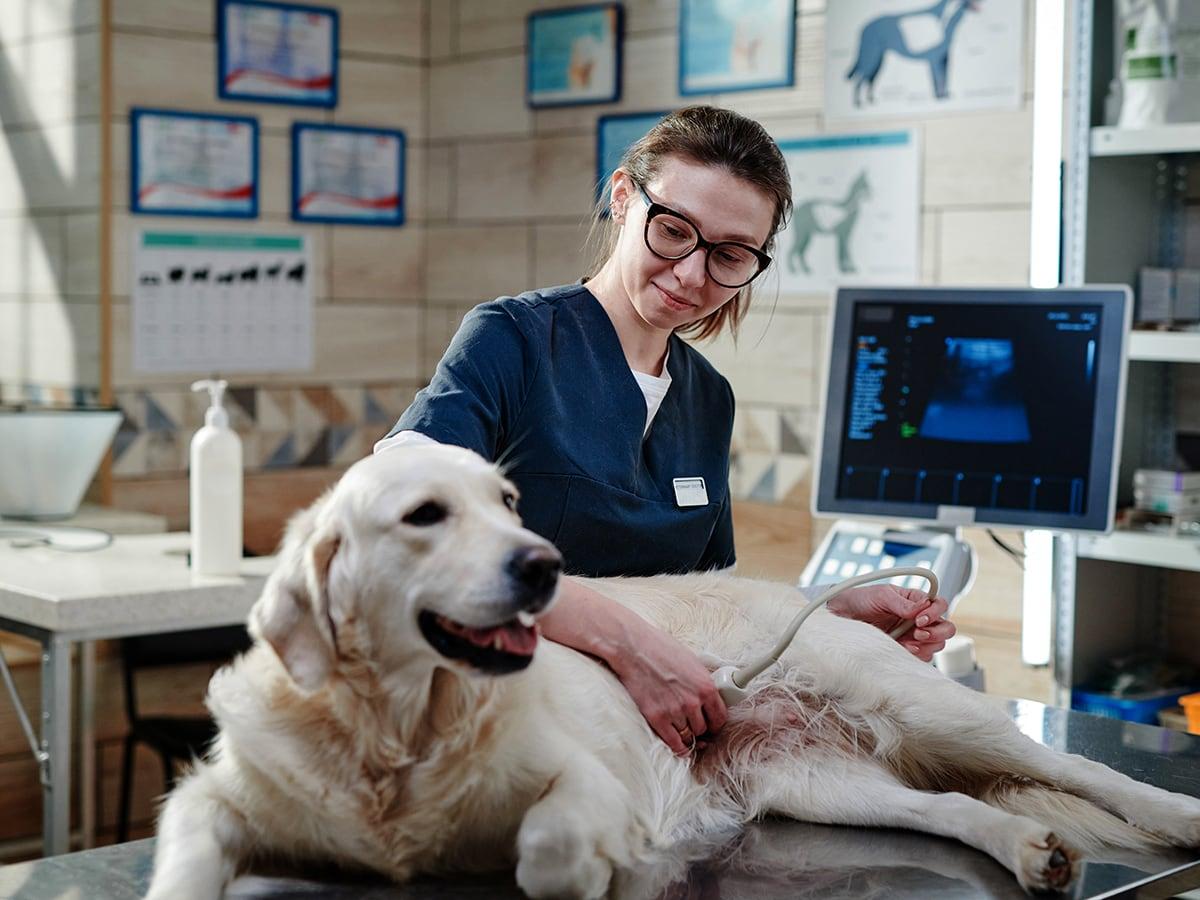As a pet parent, it’s impossible to know the symptoms of every health condition that could affect your dog – there are just too many. However, even though Addison’s disease isn’t common in dogs, it can be severe and even life-threatening. In this article, we’ll explain Addison's disease in dogs so that you can spot the signs quickly and get the veterinary care your dog needs.
Breeds commonly affected:
Springer Spaniel
Soft-Coated Wheaten Terrier
What is Addison’s disease in dogs?
Addison's disease is a relatively uncommon hormonal condition that can affect dogs as well as humans. Its scientific name is hypoadrenocorticism. It causes a dog's adrenal gland to stop producing hormones, including the stress hormones cortisol and aldosterone, which allow the body to maintain blood pressure and hydration.
What causes Addison’s disease in dogs?
Dogs develop Addison's disease when their adrenal glands are damaged. The cause is often immune-mediated, which means the dog's immune system recognizes the cells in the adrenal gland as foreign and attacks them. However, the adrenal glands can also be damaged due to a lack of blood supply, secondary cancer spread, and a condition called amyloidosis. Unfortunately, sometimes, the cause of the condition isn’t found.
There’s another type of Addison’s disease in dogs, called iatrogenic Addison’s disease. This isn’t caused by damage to the adrenal gland, but a temporary pause in adrenal hormone production when a dog receives regular or high doses of steroid medications. If the steroid medication, which acts as a supplement so that the dog’s body doesn’t need to produce its natural adrenal hormones, is stopped suddenly, it takes a while for the adrenal glands to spring back into action, and during this time the dog may develop Addison’s disease. For this reason, it’s important to always wean a dog off steroid medication, rather than stopping the treatment course abruptly.
What are the symptoms of Addison’s disease in dogs?
Dogs with Addison’s disease may show some of the following symptoms:
Lack of appetite
Lethargy
Vomiting
Diarrhea
Blood in the stools or the vomit
Malena (black, tarry feces)
Weakness
Weight loss
Trembling/tremors
Stiffness
Excessive thirst
Excessive urination
Collapse
Seizures
However, not every dog will show every symptom, and many symptoms are similar to other health conditions, making it harder to diagnose. Addison’s disease can be acute or chronic, and the most severe signs are associated with acute Addison’s disease, where symptoms develop suddenly and deterioration happens quickly.
How is Addison’s disease diagnosed?
To diagnose Addison’s disease in dogs, the vet will likely recommend initial blood tests to check the levels of red and white blood cells and electrolytes and assess overall organ health and hydration status. When a dog is unwell, their white blood cell levels normally respond to fight the infection. However, in dogs who are unwell with Addison’s disease, the white blood cell levels don’t increase, and this would raise the vet’s suspicion that the signs are caused by Addison’s disease. Similarly, the vet would be suspicious of Addison’s if a dog had high potassium levels relative to their sodium levels.
To be sure that your dog has Addison's disease, the vet will recommend an ACTH stimulation test. This involves checking their cortisol levels on a blood test (if they have Addison's then the levels should be very low), then giving an injection to make the adrenal glands release more cortisol, and then rechecking the levels. If the cortisol levels after the stimulating injection are still low, then the diagnosis is Addison's.
What is the treatment for Addison’s disease in dogs?
Because Addison’s disease in dogs is life-threatening, treatment should be started as soon as possible. Emergency treatment will usually include:
Fluids, given into the vein via a drip
Steroid medication, given directly into the vein
Glucose
However, dogs with Addison’s disease don’t regain their adrenal gland function, which means that medications that replicate the adrenal hormones need to be given long-term. Treatment usually involves a regular injection (around every 28 days) and daily steroid tablets, and the doses are adjusted based on regular blood tests.
How much does it cost to treat Addison’s disease in dogs?
Dogs with Addison's disease need a few blood tests to be diagnosed. If they need emergency treatment and hospitalization this can be costly. In addition, dogs with Addison's will require lifelong treatment and regular blood tests to ensure their dose is correct. Therefore, treating Addison's disease might be more expensive than you’d expect. According to data from Spot Pet Insurance, the average nationwide cost to treat Addison’s disease in dogs in the US is $300.45, and if you live in the states listed below, here’s an idea of what you can expect to pay:
California - $228.01
New Jersey - $318.80
Florida - $553.00
Summary
Although Addison’s disease in dogs is relatively uncommon, it can be life-threatening. If your dog is suddenly unwell, or if they show some of the symptoms listed above, it’s important to get help and advice from your vet as soon as possible. Thankfully, if treatment is started quickly, dogs with Addison’s can go on to live a normal life, although they will need life-long medication.
About the Author
This article was written by Dr. Hannah Godfrey, a DVM who earned her degree from the Royal Veterinary College in 2011. Her experience has spanned various aspects of the veterinary industry, from mixed practice to specialized small animal work. Dr. Godfrey has also honed her skills by completing advanced canine and feline dentistry training! These days, Dr. Godfrey shares her expertise through pet-related writing. Read more articles written by Dr. Godfrey on petsradar.com.

Hannah graduated from the Royal Veterinary College in 2011 and began work straight away at a busy mixed practice. Initially, she treated all species, but focused on small animals from 2014. She has a passion for soft tissue surgery, ultrasound, and canine and feline dentistry, having completed additional training in these areas.
In 2018, Hannah began working at a smaller, independent practice close to home, in order to devote more time to her other loves – writing comedy fiction and spending time with her young family. She now spreads herself across clinical and non-clinical veterinary roles, including working as a locum vet, being Community Lead for a team of Human Factors trainers, and using her writing skills to help educate and inform pet owners.












